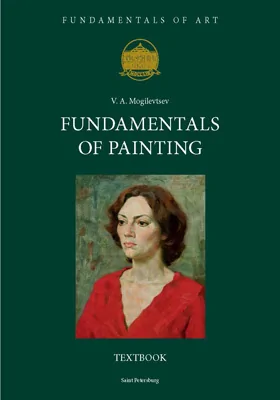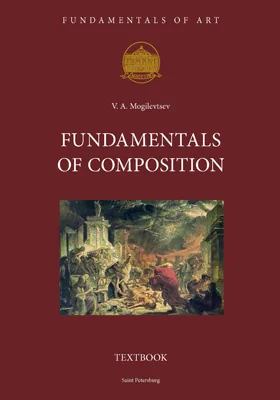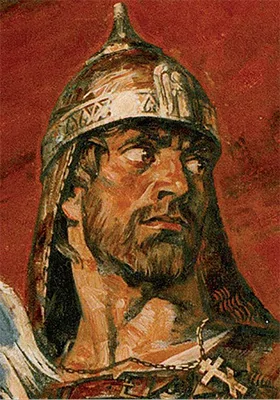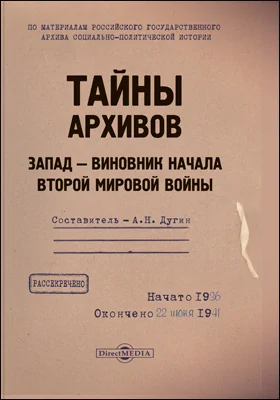
Fundamentals of Painting
Здесь можно купить книгу "Fundamentals of Painting" в печатном или электронном виде. Также, Вы можете прочесть аннотацию, цитаты и содержание, ознакомиться и оставить отзывы (комментарии) об этой книге.
Book 2
Автор: Владимир Могилевцев, V. Mogilevtsev
Форматы: PDF
Серия: Fundamentals of Art
Издательство: 4арт
Артикул: 103464
Краткая аннотация книги "Fundamentals of Painting"
Students of the Academy learn and master painting by doing studies of arranged scenes from life. An arranged scene is a still life or a live model placed in certain color context that is usually created by drapery.
An instructor sets the scene according to the school curriculum.
The program ensures that the complexity of tasks gradually increases. At first students paint a head, then a portrait with hands, after that they move on to painting nude figures.
When working on a painting a student must solve numerous tasks in order to achieve a good result. It is
impossible to solve all of these tasks at the same time.
For this reason the process is divided into steps. Each step is dedicated to a task or series of tasks. How well a student completes each task determines the final result.
We will complete several studies using this method.
Whilst doing the studies we will try to make our reader acquainted with the steps of the painting process and the main painting terms: what are color relationships, relationships of warm and cold tones, edges etc. We shall also discuss the materials used in oil painting.
The book is arranged in the following manner. When you open the book, on the right there is a step by step description of the painting process. On the left there are commentaries and examples from classical works that illustrate how similar tasks were approached by outstanding artists from Russia and elsewhere.
Painting can only be mastered through practice. This book is most useful if the reader is painting at the
same time. During the painting process, questions may arise. This book offers the answers.
Содержание книги "Fundamentals of Painting "
PORTRAIT
Step by step process
I. Concept
Materials
Sketch
II. Paintbrush drawing on canvas
Color relationships in painting
III. Color relationships
The first layer
IV. Working on the details
1. Eyes
2. Nose
3. Mouth and Chin
4. The edges of color spots: face, light and
shade, hair
5. Neck and Shoulders
V. Final step
PORTRAIT WITH HANDS
Step by step process
I. Concept
Sketch
II. Charcoal drawing on canvas
III. Color relationships
The first layer
IV. Working on the details
1. Head
2. Hands
3. Clothes and background
V. Final step
FIGURE
Step by step process
I. Concept
Sketch
II. Charcoal drawing on canvas
III. Color relationships
The first layer
Painting the form
IV. Working on the details
1. Torso
2. Head
3. Hips and Arms
4. Knees
5. Feet
6. Background
V. Final step
COPYING
Copying as part of the training at the Academy of Arts
Step by step process
I. The choice of materials
II. Charcoal drawing on canvas
Underpainting in brown
III. The first layer in color
IV. Working on the details
1. Head
2. Hands
3. Clothes and background
V. Final step
Conclusion, bibliography, about the author
Все отзывы о книге Fundamentals of Painting
Отрывок из книги Fundamentals of Painting
16fundamentals of paintingTonal ValuePure white or very dark black colors are not usually used in a painting. As a rule, the middle part of the value scale is used. The more active and loud the color spots are in a paint-ing, the closer they are in tonal value. And, on the con-trary, complex greys should be compensated by differ-ences in tonal values to avoid the painting looking dull.tonal range in classical paintingColor Relationships in PaintingMUTUAL PENETRATION OF COLORS, VALUE, OUTLINE, “MASS” AND TEXTURE OF COLOR SPOTSColor relationshipsAny painting consists of the flat surface (the base) and color spots on this base. A color spot is the main tool of the painter. Each color spot makes its own impact. Sev-eral color spots that constitute the painting may evoke a feeling of harmony, delight and pleasant associations but they may also irritate or leave the viewer indifferent. These are called color relationships.In order to create beautiful color relashionships, the artist must engage all of their feelings and thoughts, sense the “sound” of every spot of color. Then the emotions will be recorded onto canvas and the color will “sing”. Achieving true color relationships is the main goal of painting from life. To accomplish it, you should see things as a whole. Sometimes it is beneficial to detach yourself from the scene and see not objects, but spots of color.Mutual penetration of colorsIn the world around us everything has its own color. What we see is reflected color. Light falls on an object, and then “bounces” from the surface on everything around it. The light hits all surrounding things including our eyes. The bounced light transports color onto nearby objects, thus changing the color of these objects. This is called reflec-tion, or reflected color. The more intense the color of the surface and the brighter the sunlight is, the stronger the reflected colors are. If you take a white porcelain jug and put it outside on a wooden table on a summer’s d...
другие книги автора
С книгой "Fundamentals of Painting" читают
Внимание!
При обнаружении неточностей или ошибок в описании книги "Fundamentals of Painting (автор Владимир Могилевцев, V. Mogilevtsev)", просим Вас отправить сообщение на почту help@directmedia.ru. Благодарим!
и мы свяжемся с вами в течение 15 минут
за оставленную заявку












































